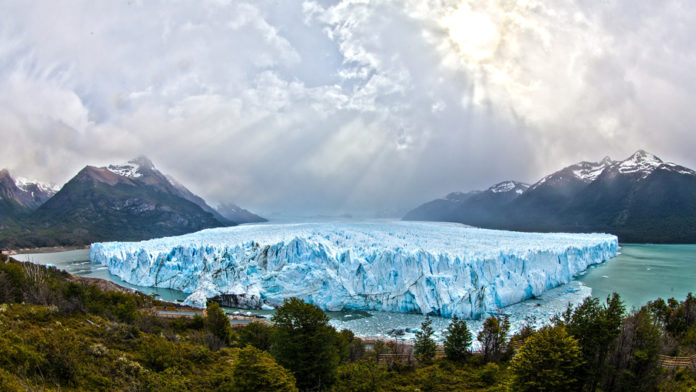It’s amazing how many secrets lie at the extremes of our planet: Canadians are researching everything from creatures living under the pressure of the deep sea to complex life thriving in the hot and dark environments found deep underground. Canada also boasts a collection of glacial ice cores that contains frozen secrets dating back at least 12,000 years, and even up to 800,000 years, archiving bits of the atmosphere and microbial life old enough to date back to the last Ice Age.
Reading the ice record is similar to reading the rings on a tree: the deeper you drill, the further back in time you go, with each layer representing a year of accumulated snow and ice, and anything from the environment that might be trapped in it. Modern technology allows us to analyze ice cores down to resolutions that were impossible only decades ago when the cores were collected.
The record is slated to move into its new home at the University of Alberta in late 2016, a move championed by glaciologist Prof. Martin Sharp. The university is constructing specialized facilities will keep the samples clean and frozen, and is also home to the state-of-the-art facilities and expertise needed to carry out the physical, chemical, and microbiological analysis of the ice.
Prof. Martin Sharp takes us into the lab to describe the importance of ice cores in looking at the history of manmade contaminants
Video courtesy of the University of Alberta
What kinds of information are locked into glacial ice?
Glacial ice freezes pockets of gases from the atmosphere, particles and toxins falling with snow and sea spray, and even living microbes that may have caused diseases and plagues. This means that it’s a dated record of our climate, airborne contaminants, and microscopic life. It comes as no surprise that scientists across many disciplines are interested in studying the ice cores.
For instance, analyzing the gas bubbles trapped at different depths for carbon dioxide and methane, scientists can estimate the Earth’s temperature at different times.
Glaciers are also home to many ancient microbes, having a total estimated mass 1,000 times that of all humans on Earth in the Arctic and Antarctic ice alone. Many of these can lie dormant for long periods of time, but could spring back to life when thawed out to more favourable temperatures. It’s a controversial theory, but the natural cycling of ice accumulation and melting could even explain the resurgence of old epidemics as bacteria and viruses are stored, and later return to the surface.
The ice also traps chemical compounds and toxins from human industrial activity that travel there through air and water. Prof. Jonathan Martin looks for everything from pesticides like DDT to microplastics that have been shredded into small pieces by friction in the ocean. His analysis of Arctic sea ice found that nearly every sample collected is now contaminated with microplastics.
This brings up a hazard posed by climate change that we don’t often hear about – rising global temperatures mean that legacy contaminants that are currently trapped in glaciers are released into our oceans as the ice melts.
Prof. Martin Sharp on acquiring the ice core collection and the importance of legacy contaminants in glacial ice
Video courtesy of the University of Alberta
Archiving and expanding the ice core collection
While scientists are eager to study this icy archive, most tests destroy the samples and deplete the material available for future study. Climate change is also melting glacial ice at an alarming rate. For these reasons, the University of Alberta plans to not only be the keeper of existing cores, but also an active contributor of new material through further expeditions. Prof. William Shotyk will drill 300 meters into the receding Athabasca glacier, bringing back 5,000 years of information on climate and environmental change.
Curious to learn more about the health of our planet’s water? Check out Irena Creed’s Orange Chair Interview on ecosystem science and emerging contaminants in our water supply.








































